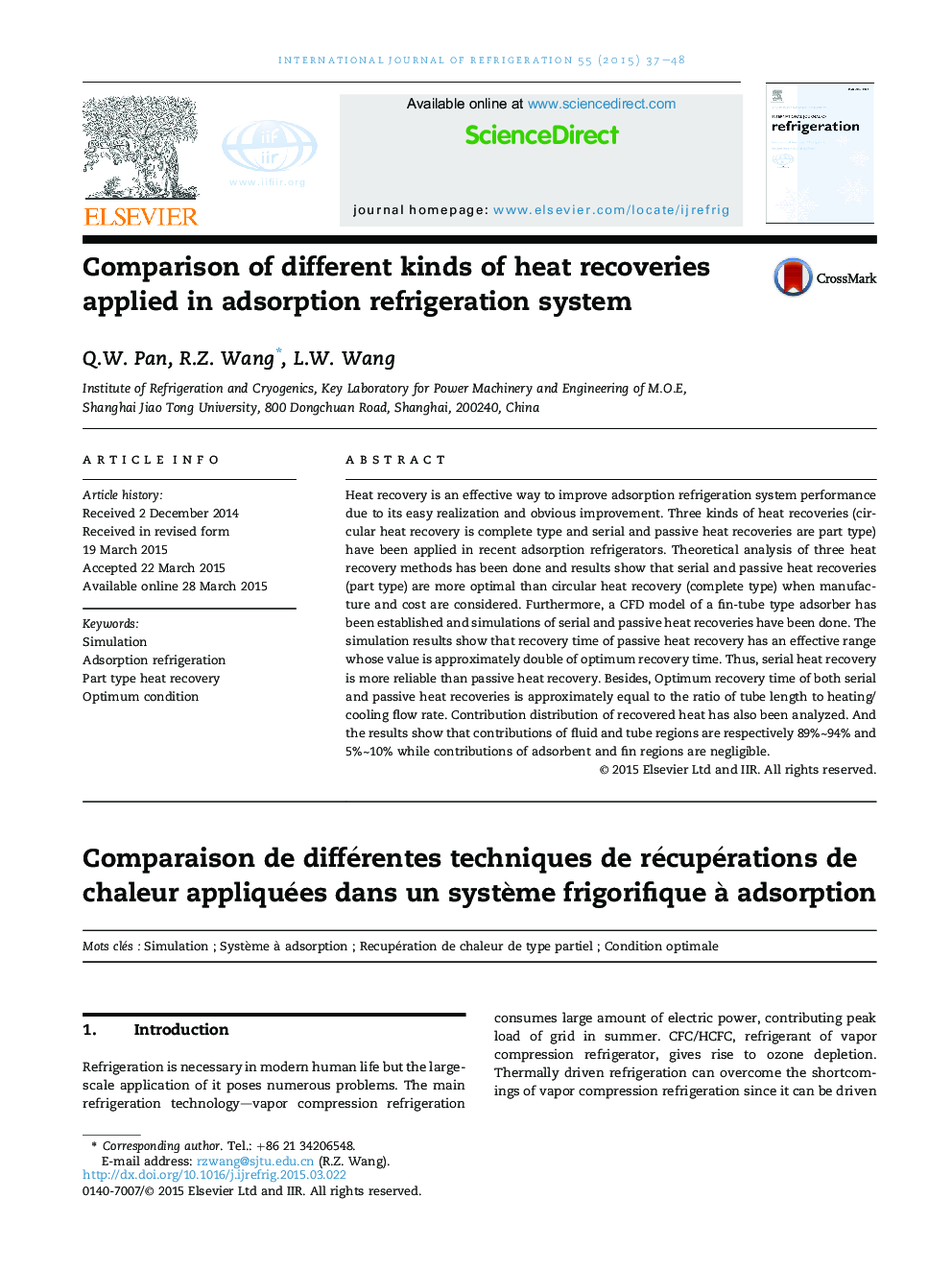| کد مقاله | کد نشریه | سال انتشار | مقاله انگلیسی | نسخه تمام متن |
|---|---|---|---|---|
| 786784 | 1466410 | 2015 | 12 صفحه PDF | دانلود رایگان |
• Three kinds of heat recoveries applied in recent adsorption refrigeration system have been theoretically analyzed.
• CFD model of a fin-tube type adsorber was established and simulations of serial and passive heat recoveries were done.
• Optimum recovery time of serial and passive heat recoveries is nearly equal to the ratio of tube length to flow rate.
• Recovery time of passive heat recovery has an effective range whose value is nearly double of optimum recovery time.
• The fluid region plays an absolutely dominant role (more than 89%) in contribution distribution of recovered heat.
Heat recovery is an effective way to improve adsorption refrigeration system performance due to its easy realization and obvious improvement. Three kinds of heat recoveries (circular heat recovery is complete type and serial and passive heat recoveries are part type) have been applied in recent adsorption refrigerators. Theoretical analysis of three heat recovery methods has been done and results show that serial and passive heat recoveries (part type) are more optimal than circular heat recovery (complete type) when manufacture and cost are considered. Furthermore, a CFD model of a fin-tube type adsorber has been established and simulations of serial and passive heat recoveries have been done. The simulation results show that recovery time of passive heat recovery has an effective range whose value is approximately double of optimum recovery time. Thus, serial heat recovery is more reliable than passive heat recovery. Besides, Optimum recovery time of both serial and passive heat recoveries is approximately equal to the ratio of tube length to heating/cooling flow rate. Contribution distribution of recovered heat has also been analyzed. And the results show that contributions of fluid and tube regions are respectively 89%∼94% and 5%∼10% while contributions of adsorbent and fin regions are negligible.
Journal: International Journal of Refrigeration - Volume 55, July 2015, Pages 37–48
